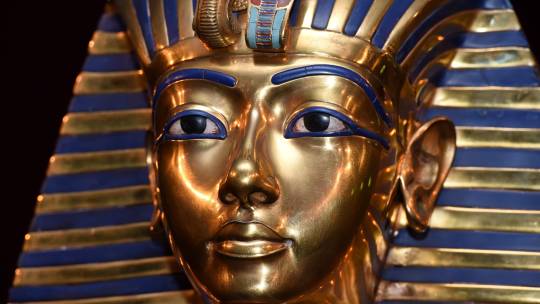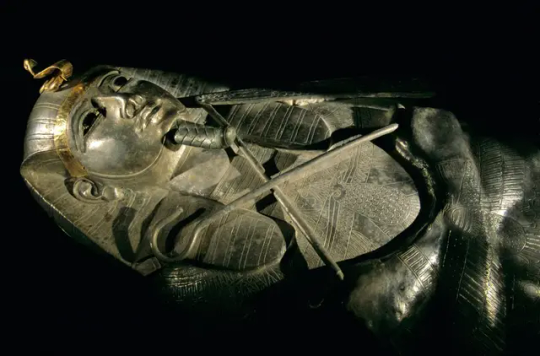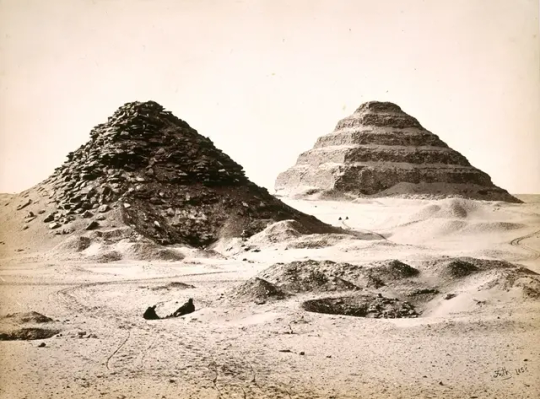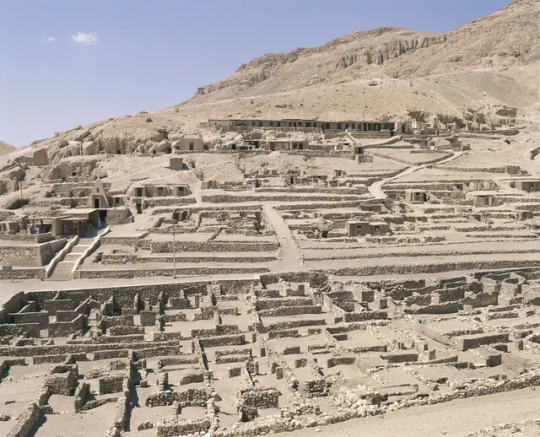#A Grave Robbery
Explore tagged Tumblr posts
Text

Having a bath with a friend is always fun. (If you haven’t read Deanna’s latest, highly recommend it!)
6 notes
·
View notes
Text
Mystery Review: Two-For-One
Deanna Raybourn — A Grave Robbery Once upon a time, several decades ago, when I was in the Girl Scouts, we took a trip to Victoria, B.C. One of the attractions (which is sadly now closed) was Madame Tussard’s Wax Museum. At first, I found the exhibits boring, as waxworks of Queen Elizabeth, Elizabeth Taylor, Abraham Lincoln, and celebrities held zero interest to my ten(ish) year-old self. Then,…

View On WordPress
#a grave robbery#anatomical venus#book#book cover#book photo#book review#deanna raybourn#Joanna ebenstein#my 52 weeks with christie#mystery#mystery review#The anatomical venus#wild books
1 note
·
View note
Text
March 2024 Reading Recap
Well, this is quite delayed, as we’re now more than a full week into April. BUT. It was delayed for good reasons! First, I GOT A NEW JOB 🙌 I was laid off in January and have spent the whole first quarter of the year job searching, and I’m so excited about this new role. It’s with a company I’ve admired for a while doing really amazing work in precision medicine for oncology. I started it this…

View On WordPress
#A Grave Robbery#Ali Hazelwood#Ancient Sentinel#Andy Serkis#Bride#Cara Devlin#Deanna Raybourn#Faye Delacour#JRR Tolkien#Katie Reus#March Recap#Reading Recap#Taken to the Grave#The Fellowship of the Ring#The Lady He Lost
0 notes
Link

0 notes
Text


Maybe I'm going over the top, but Art Déco was also an era of fascination with Ancient Egypt (or what people perceived as Ancient Egypt)* and since I've had this cc in my game for ages... why not use it?
180 notes
·
View notes
Text
Every so often I’ll see interpretations of Liara’s N7 armor display as creepy/obsessive behaviour — and that’s a fair interpretation! But it got me thinking about my own interpretation and, well
It kinda makes sense, doesn’t it?
Whether you romance her or not, she still has that armor display. The archaeologist. Displaying the armor of someone Important™️, someone whose most recent importance was downplayed by the Alliance — support for Shepard’s Reaper theory was waning, the Alliance sent them off to more remote spots, Alchera happened…
Liara is first and foremost a student of history, and an Asari one at that. She’s trained to see those patterns of history, and knows a legend when she sees one — beyond whatever else Shepard may have been known for before ME1. And in the aftermath of Alchera, I’m sure she got her first real experience with how humans, and the Alliance in particular, will try to bury or gloss over inconvenient truths — if they can be bothered to acknowledge those truths in the first place
They didn’t memorialize Alchera until Shepard was back, two years later. They didn’t want to keep a spotlight on Shepard, on why they were even out there. But Shepard didn’t stay buried, and, well, maybe other ghosts wouldn’t either
All this to say I personally see Liara’s display as her own way of honoring Shepard as a historical symbol, as someone Historically Important™️, and part of that history is a part the Alliance wanted to forget, was happy to forget until they couldn’t anymore
But Liara wasn’t going to forget, and she’d make sure galactic history broadly wouldn’t, either. And in ME3, she takes that conviction one step further, seeding Shepard’s story, the story of the Reapers, all throughout the galaxy
That just reads as more narratively consistent to me, anyway 🤷♂���
#mass effect#liara t'soni#again nothing wrong with the other interpretation!#I just think the fact that Liara is an archaeologist a historian and an alien from a species that lives a long time#and probably sees death differently or grieves differently#should also be explored#‘she gave Shepard’s body to Cerberus’ yeah she probably figured better them than the collectors#and if she gave it to the Alliance and they interred Shepard’s body (no guarantee they’d cremate)#what’s to stop the collectors from doing a little light grave robbery#maybe Asari don’t put as much stock in corpses maybe it’s not as big a deal for them#cuz the soul ain’t there#idk#she probably had Doubts that Cerberus could bring them back#but at least the collectors would be going after them and not potentially moving into an area with more civilians just to get that body bac#idk I am rambling#maybe I’ll rewrite this when I can word properly
104 notes
·
View notes
Text


Zhang Qiling & Wu Xie ; Grave Robbers' Chronicles ☆ Good Smile Arts Shanghai
#zhang qiling#wu xie#grave robbers chronicles#grave robbery noge#the lost tomb#time raiders#daomu biji#anime#anime figure#figure#figure collecting#anime figurine#figurine#anime collecting#scale figure#myfigurecollection#manga#donghua#zhang kylin#xiaoge
100 notes
·
View notes
Text

What’s the perfect follow up to doing lineart to the point of not insignificant hand pain? Detailed pencil work, the thing that once in art school I did so much I couldn’t draw for two weeks because of hand pain.
#it was a series of drawings of animals so a lot of fur rendering but still. that was in the year of our lord 2014 when my hands were young#and fresh#wip#pencil sketch#my art#i have been thinking about Krow (this character) and their story a lot. not writing but thinking. planning.#think maybe I need to rewrite all 120ish pages so far from chris' perspective to get the unsettling horror feel more prominent#despite the fact that i love krow and they have done nothing wrong in their life ever. except grave robbery and desecration of human remains#also petty theft
105 notes
·
View notes
Text

Discover the Hidden History of Tomb Robbing in Ancient Egypt
Criminals plundered the riches of Egyptian pyramids and underground burials, often within a few years or, in some cases, within a few hours of occupants’ interment.
On November 4, 1922, workers led by British archaeologist Howard Carter noticed a single stair peeking out from beneath the shifting Egyptian sand. Within three weeks, Carter and his team had excavated enough limestone debris and soil to reveal a stairwell that led to the antechamber of an ancient tomb.
After five long years of searching, Carter had found the tomb of Tutankhamun, deep beneath the Valley of the Kings, a site west of the Nile River. Boring a tiny hole in the second door to the antechamber, the archaeologist peered through, using the light of a single candle to survey a small room crammed with a motley mix of furniture, gilded animal heads and dismantled chariots, as well as other priceless treasures last seen more than 3,000 years prior.
The 18th Dynasty ruler’s tomb was the single most consequential discovery of Egyptian antiquities to date; its importance lay not just in the treasures hidden inside, but in the fact that the burial had somehow survived the robbers who had emptied out nearly every other ancient Egyptian tomb. Only a few royal graves rival Tutankhamun’s in splendor. Chief among them is the intact tomb of Psusennes I, known as the Silver Pharaoh because of the silver coffin that housed his mummy.

The silver coffin of Psusennes I.
In an ancient society with a stark separation between the rich and the poor, tomb robbing was ubiquitous. Nobles literally buried their wealth while living alongside people who often didn’t have enough food to feed their families. Plundering burials was a shadow economy driven by criminals who often had inside knowledge of the tombs. It’s likely that many looters either helped build the structures themselves or paid off someone involved in the tombs’ construction, says Betsy M. Bryan, an emeritus Egyptologist at Johns Hopkins University.
Some grave robbers were stonecutters and craftsmen who left gaps in tombs’ walls or knew which bedrock was soft enough to tunnel through to reach the treasures housed within. Others schemed to evade or pay off security left to guard the tombs. These thieves were well connected, calculating and decidedly precise in their criminal endeavors, Bryan says.
“Evidence from the Old, Middle and New Kingdom[s] shows that tomb robbers could be remarkably patient and work over lengthy time periods to create tunnels into tombs that they thought would be rich [with treasures],” she says.

Aboveground structures like the Step Pyramid of Djoser were natural targets for tomb robbers.
Looting happened consistently throughout the history of ancient Egypt, but it was most prevalent during the First and Second Intermediate Periods, which followed the Old and Middle Kingdoms, respectively. Without a strong ruler in place, power became decentralized, and the state had less money to protect its graves. The end of the New Kingdom also ushered in a period of corruption and uncertainty that resulted in widespread tomb robbing.
Officials took a range of steps to prevent tomb robbing, like carving curses on doors to scare would-be looters away. Some tombs, like the pyramid complex of Djoser, were filled with debris to block passage to the burial chambers. During the New Kingdom (circa 1550 to 1070 B.C.E.), sovereigns were buried underground instead of in aboveground pyramids. Workers tasked with building these hidden tombs lived in Deir el-Medina, a village near the Valley of the Kings. Though the isolated, close-knit nature of the community was intended to lower the likelihood of theft, it ultimately had the opposite effect, encouraging looting by the very people assigned to protect the dead.
Workers tasked with sealing tombs had the best access to the treasures hidden within. They were often the last ones out, so no one was the wiser if they ransacked the tombs they’d been hired to protect, says Aidan Dodson, an Egyptologist at the University of Bristol in England. Sometimes, the burials would appear untouched, but once the coffin was opened, the golden mask that once adorned the pharaoh’s face would be missing.

Ruins of Deir el-Medina, a village occupied by the workers who built the tombs in the Valley of the Kings.
In other cases, when a mummy was unwrapped, the jewelry that had been placed inside was gone, stolen by the undertakers who’d prepared the dead for burial, Dodson says. He adds, “Resin was used in embalming, and there would be places on the body where there was an impression of a piece of jewelry that was no longer there.”
When the tomb of Nefermaat, an ancient Egyptian prince, was uncovered in 1871 at Meidum, archaeologists at first thought it was intact, sealed up tight for 4,000 years. But once inside the burial chamber, the scene was chaotic. “Everything was smashed to pieces,” Dodson says. “It had been robbed [and] the mummy broken.”
After a heist, ancient tomb robbers moved on to the next phase of the crime: trafficking their stolen goods in exchange for payment. This, too, required forethought. Getting caught bartering the mask of a pharaoh, for example, would have been cause for execution by impalement on a stake. To avoid this fate, criminals went after treasures that couldn’t be traced, like gold and other precious metals that could be melted down without buyers knowing their origin. In some cases, robbers would steal highly valuable perfumed oils to sell on the international market. Thieves also burned gilded furniture and statues to remove the gold that once adorned them, Dodson says.

Papyrus Mayer B, a legal document detailing the trials of tomb robbers during Egypt's 20th Dynasty.
Historical evidence of tomb robbing comes primarily from a set of papyri detailing trials that took place in Thebes during the New Kingdom, specifically the 20th Dynasty, which spanned 1189 to 1077 B.C.E. The legal documents provide a window into the individuals who carried out the robberies directly, who knowingly fenced looted treasures or who ferried thieves across the Nile to sell their sacred finds, Bryan says.
“We took our copper tools and forced a way into the pyramid of this king through its innermost part,” said a mason named Amenpanufer in a confession dated to around 1110 B.C.E. After stripping the royal mummies of their gold, amulets and jewels, Amenpanufer and his fellow thieves “set fire to their coffins [and] stole their furniture.” The robbers then divided the tomb’s spoils among themselves.
The papyri point to a time when the state was in turmoil, says Salima Ikram, an Egyptologist at the American University in Cairo. Rampant tomb looting coincided with a period of unrest, famine, outside attacks and constant transitions in power.
“In the 20th Dynasty when we have a lot of royal tomb robbery, the state couldn’t provide, and that’s why people were taking matters into their own hands,” says Ikram.

Tutankhamun's tomb was one of the few royal Egyptian burials left largely untouched by ancient looters.
Still, tomb robbing wasn’t confined to times of unrest. Even Tutankhamun, who ruled during the 18th Dynasty (approximately 1550 to 1292 B.C.E.), when Egyptian civilization was at its peak, was the victim of theft. Inside the antechamber of the king’s tomb, Carter’s team found bags of abandoned loot. According to Dodson, the thieves appeared to have been caught in the act and forced to leave their ill-gotten goods behind.
Tomb robbing was one of the worst crimes an ancient Egyptian could commit, as tombs were considered sacred vehicles that provided passage to the afterlife. “Elite society was geared toward eternal life,” says Maria Golia, author of A Short History of Tomb-Raiding: The Epic Hunt for Egypt’s Treasures. Nobles were mummified and packed in a tomb with their belongings, all of them necessities, because “the afterlife was viewed as an extension of their current life,” Golia explains.

The white limestone sarcophagus of Nefermaat, whose tomb was looted by robbers.
Destruction of a tomb was, in a sense, a form of murder—a fact reflected in the brutality of documented punishments, Ikram says. Some accused criminals had their hands cut off, while others were impaled, a form of execution where a stake was inserted into the anus, perforating the body all the way up to the torso.
No matter the punishment, noble tombs remained ripe for theft throughout ancient Egypt’s 3,000-year history—and beyond. After the civilization fell into decline, thievery gave way to treasure hunting, with residents of the region no longer revering Egyptian religion or fearing the curses of the dead, says Dodson. Stealing from tombs was hardly considered a crime anymore. By the late 19th century, seizing such riches was a government-sanctioned practice, with archaeologists excavating tombs in the name of science.
In an ancient world marked by haves and have-nots, loot tucked inside pyramids and buried underground presented an opportunity for an irresistible crime, especially as the once-great Egyptian empire lost power. What was formerly sacred was now a means for feeding a family, Golia says.

Plunderers' loot found in King Tut's tomb.
“This was a system built on burying money, even entire households, underground,” she says, “and while the architects only had one shot at building an impenetrable tomb, the robbers had all the time in the world to figure out how to get in.”
By Sarah Novak.
#Discover the Hidden History of Tomb Robbing in Ancient Egypt#howard carter#tomb#ancient tomb#tomb robbery#grave#ancient grave#grave robbery#treasure#looting#ancient artifacts#archeology#archeolgst#history#history news#ancient history#ancient culture#ancient civilizations#ancient egypt#egyptian history#egyptian art#egyptian pharaoh#long post#long reads
52 notes
·
View notes
Text
The Lost Tomb (2015) - 盗墓笔记 - Whump List

List by StayDandy Synopsis : Wu Xie is an antique shop owner who comes from a family of tomb raiders. As he continues the family trade with his team of tomb raiders, he finds lost treasures of the Warring States as well as the answers to the tragedies of his family’s past. With the help of his grandfather’s notes and his team – his experienced Uncle Wu Sanxing, San Xing’s loyal helper Pan Zi, the quiet Zhang Qiling, and the resourceful Pang Zi – Wu Xie sets out to find the lost treasures as well as the people responsible for the massacre of his family. (MDL) AKA : Grave Robbers’ Chronicles | Grave Robbery Note
Whumpees : Wu Xie played by Li Yi Feng (center forefront) • Zhang Qi Ling played by Yang Yang (2nd from left) • High Shao [Wu Xie's friend] played by Leon Lee (not pictured) • Pan Zi played by Wei Wei (3rd from right)
Country : 🇨🇳 China Genres : Action, Adventure, Mystery, Supernatural, Bromance
Notes : This is a Full Whump List • Adapted from novel 1 of "The Grave Robbers' Chronicles" (盗墓笔记) by Kennedy Xu (南派三叔) • My favorite episode is pink • Suggested watch order of series (not including movies & spin-offs) : -- 1. Mystic Nine (2016) >> 2. The Lost Tomb (2015) -- 3. The Lost Tomb 2: Wrath of the Sea (2019) -- 4. The Lost Tomb 2: Explore with the Note (2021) -- 5. The Lost Tomb 3: Ultimate Note (2020) -- 6. Adventure Behind the Bronze Door (2024) -- 7. Tomb of the Sea (2018) -- 8. Reunion: Sound of the Providence (2020) -- 9. Reunion: Sound of the Providence 2 (2020)
Related Lists : The Lost Tomb 2: Wrath of the Sea (2019) - Full List • The Lost Tomb 2: Explore With the Note (2021) - Full List • The Lost Tomb 3: Ultimate Note (2020) - Full List • Adventure Behind the Bronze Door (2024) - Full List
Episodes on List : 8 Total Episodes : 10
*Spoilers below*
01 : Wu Xie shot in the arm … punched in the stomach, collapses … High Shao tied up & mouth taped
02 : Wu Xie & High Shao head pain from sharp noise, Wu Xie entranced, kicked into water … Pan Zi attacked & bitten by flesh-eating bug, bug flung onto Wu Xie, bitten … High Shao pukes … Zhang Qi Ling cuts his own hand, collapses … Wu Xie hit in the head & knocked out, nightmare.. Zhang Qi Ling exhausted from blood loss, sleeping.. carried/helped to walk
04 : Pan Zi attacked by corpse-eating bugs, heavily bitten up, helped to walk, bug dug out of a wound (ewww) … Wu Xie attacked & bit (by human)
05 : Dizzy, passes out, was poisoned by bite, given temporary fix … High Shao kicked to the ground … Wu Xie unsteady, helped to walk … dizzy, passes out & falls from a great height, caught … punched, choked, coughing, neck bruised, unconscious
07 : (near end) Head pain, falls
08 : … continued from previous ep. ... Falls, wind knocked out of him by the landing, Zhang Qi Ling cuts his own hand … High Shao tied up … Wu Xie dizzy, passes out
09 : (near end) Tripped
10 : High Shao hit with batons … knocked out with a injection, Wu Xie knocked out with chloroform.. Wu Xie & High Shao kidnapped & tied up.. mouths taped
More Whump Lists for this show: love-me-a-lotta-whump
#whump#whump list#full whump list#Asian whump#China#The Lost Tomb#盗墓笔记#Grave Robbers Chronicles#Grave Robbery Note#Wu Xie#Zhang Qi Ling#High Shao#Pan Zi#Li Yi Feng#Yang Yang#Leon Lee#Wei Wei
25 notes
·
View notes
Note
So is the lipstick mashed up bugs? Some berries? Or do you just use like, human organs and such? Love the shade, btw. Bet it looks great on General Tai Hua's throat. ;)
fuck no! I just steal it off some dead fucking bodies, and yeah maybe when I run out on a slow day I fill the shit up with blood but that’s fucking irrelevant!
Wait… THE FUCK DID YOU JUST SAY ABOUT THAT BITCH QIANQIU??
#Ooc: qi rong I’m pretty sure that is grave robbery#Also he called him just qianqiu <33 I love gay people#qi rong#tgcf#tgcf rp#heaven official's blessing#tian guan ci fu#mxtx tgcf#mxtx rp#qiurong#lang qianqiu
26 notes
·
View notes
Text

Congrats to Bioware for setting up one of the very few scenarios I have ever encountered that firmly put an end to my looter behavior. The suggestion probably wouldn't have horrified me to quite the same degree if it wasn't for the fact that there are more than a few parallels between the Dalish and the Sámi. I can't remember ever getting that uncomfortable by a seemingly innocent quest before. Or after.
All bones on Patreon, society6, and redbubble have been donated by the entities that previously possessed them. This may or may not include ghosts working on behalf of necromancers - we didn't read the fine print.
#champions and heroes#dragon age inquisition#now I apparently have to give the Orlesians credit for at least refraining from grave robbery#... giving Orlesians credit...#tch#I can feel Loghain's disapproval in my very bones
135 notes
·
View notes
Text
I don’t make posts on TGS Mondays but I really should (or am on Tumblr much atm oopsies)
BUT MY GOOD PEOPLE; WHAT THE ACTUAL FREAKY DEAKY?!


I AM COMBUSTION WHENEVER I SEE THESE TWO PANELS.
IF TGS ENDS NOW, FOR WHATEVER UNFORTUNATE REASON, I AM A REASONABLY HAPPY MAN BECAUSE AT LAST MY BLORBOS ARE IN EMOTIONAL TURMOIL AND HAVE SAID THE LINES I HAVE SCRAPPED FOR THIS ENTIRE TIME!!
Robbery, my darlings, ily. You’re so dumb and gay and down bad yet so emotionally constipated and repressed but ily. Pls never change ♥️
#the glass scientists#tgs#me going crazy#henry jekyll#robert lanyon#robbery 😔🙏#tgs robbery#tgs jekyon#ship#my ship 😭#even Stevenson is rolling in his grave I garuntee#Samoa is a very gay place this time of year#homosexuals being SAD#nonsensical rambling
36 notes
·
View notes
Text
ARC Review: A Grave Robbery by Deanna Raybourn
A Grave Robbery Deanna Raybourn Publisher: Berkley Publication Date: March 12, 2024 Series or Standalone: Veronica Speedwell #9 Links: Amazon – Barnes & Noble – Goodreads – StoryGraph Rating: MY REVIEW CW: Body horror; murder; death; fire/fire injury; physical abuse; toxic relationships; sexism; references to forced institutionalization; animal abuse I’m absolutely obsessed with the…

View On WordPress
#4.5 Stars#A Grave Robbery#ARC#Berkley#book review#Deanna Raybourn#Netgalley#Review#Veronica Speedwell
1 note
·
View note
Text
Another Mention of Daendels Missing Remains..
May 2, 1818, at St. George del Mina. He was buried the following day in the governor’s grave just outside the castle. When his grave was opened in the twentieth century, his body was no longer present.
Holy shit it's actually real 💀 Yk I thought since I found the last passage on newspaper so I only took 95% of it srsly but now I found this in the actual book of Daendels; This is not a joke anymore. So in total there's currently 3 sources that talks abt this 😧
I know that human bones can dissolve (?) after a long time but considering that the tomb were opened in the 1900s, I don't think it should've completely gone by then. Now I started to doubt that Daendels was ever buried there at one point, what if it was js a lie/story that they made up? Oh n also; Daendels death certificate was only issued 4 YEARS after his death 🤨 What took them soo long?? 4 fucking years. If it's in months then it kinda make sense but 4 years nah, that's sus imo. I look on google n it said that death certificate should be issued shortly after doctor confirms one's death.
Lastly, I have a new theory; today I js read that there were once a "Grave Robbery" in the Dutch Cemetry Elmina, Ghana but idk when it is or anything else but what if this could be somehow connected to Daendels missing remains? Well I hope I can find smth more abt the incident. Anyway that's all for now, damn I need time to process this lol. Thank you n have a great day, stay safe 🌙
#now the question is; why n how they steal Daendels remains? if the “grave robbery” theory are true#i hope that theory is wrong#Daendels can't even rest in peace bruh#i need to stop theorizing weird stuff bcs I'm going insane lmao#daendels#history#dutch#dutch history#napoleonic era#governor general#gold coast#fan theory
9 notes
·
View notes
Text
the lengths European history museums will go to just to avoid saying the words “grave robbery”
#EYE say this as an european who benefits from grave robbery museums#but like we could be honest about it come on
23 notes
·
View notes